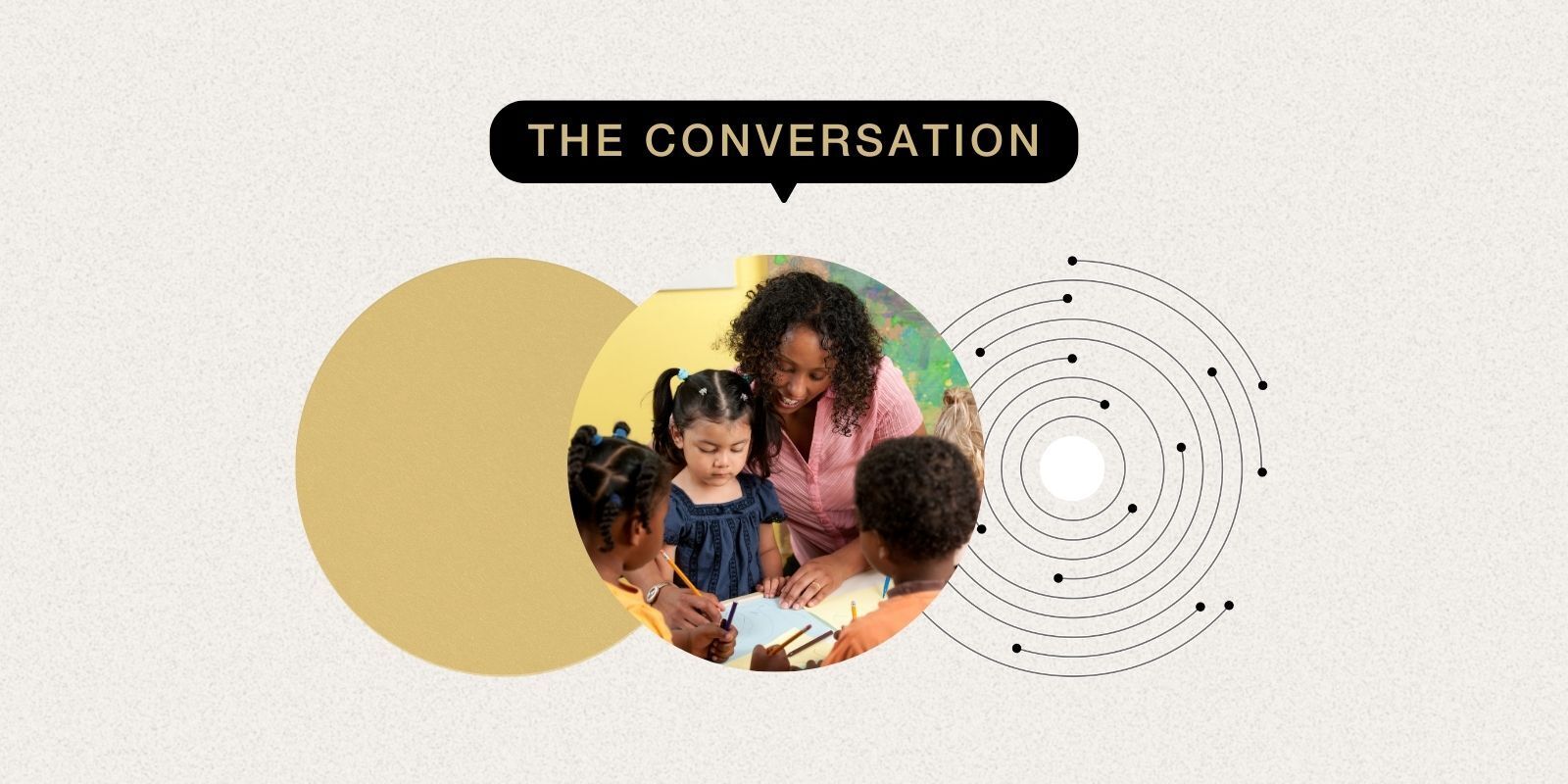2025 Alleluia Ball supports tuition assistance, professional development for Catholic education – Diocese of Cleveland

Report on the 2025 Alleluia Ball and its Contribution to Sustainable Development Goals
Event Summary and Fundraising Outcomes
The 2025 Alleluia Ball, organized by the Catholic Community Foundation, successfully convened nearly 800 guests to support educational initiatives in Northeast Ohio. The event raised over $1.74 million, directly contributing to several United Nations Sustainable Development Goals (SDGs).
- Event Theme: “Empowering Educators, Students & Innovation”
- Date: October 25, 2025
- Location: Huntington Convention Center, Cleveland
- Total Funds Raised: Over $1.74 million
- Primary Beneficiaries: Students with financial needs and professional development for educators for the 2026-2027 academic year.
Alignment with SDG 4: Quality Education
The event’s primary objective is to advance SDG 4 by ensuring inclusive and equitable quality education. The funds raised are allocated to initiatives that directly support key targets within this goal.
- Promoting Equal Access (Target 4.5): Proceeds will fund Diocesan Tuition Assistance and the Fund A Dream program, which provide financial aid to students who might otherwise be unable to access a Catholic education. Last year, these programs benefited over 3,000 students across 108 schools, directly addressing economic barriers to education.
- Investing in Educators (Target 4.c): A significant portion of the funds is designated for high-quality professional development for teachers. As noted by Bishop Malesic, investing in teachers is an investment in the future of students, which aligns with the goal of increasing the supply of qualified educators.
- Fostering Holistic Development: The educational model supported by the event nurtures the “whole person, mind, body and soul,” contributing to a comprehensive and quality learning environment.
Contribution to SDG 1 (No Poverty) and SDG 10 (Reduced Inequalities)
By providing financial access to quality education, the initiative serves as a critical tool in breaking the cycle of poverty and reducing socio-economic inequalities.
- Poverty Reduction: Education is a key determinant of economic mobility. By funding tuition for students from low-income families, the initiative provides a pathway to improved future opportunities, contributing to the reduction of poverty (SDG 1).
- Reducing Inequality: The Fund A Dream initiative, which provides $2,500 in tuition assistance to individual students identified through a scholarship application process, directly targets and reduces financial inequalities in educational access (SDG 10).
Fostering SDG 17: Partnerships for the Goals
The Alleluia Ball exemplifies a multi-stakeholder partnership (SDG 17) that mobilizes financial resources and community engagement for sustainable development.
- The event represents a collaborative effort between the Catholic Community Foundation, corporate sponsors, individual benefactors, and community members.
- This partnership model is essential for mobilizing the resources required to support the extensive network of Catholic schools and their students.
Key Directives and Future Impact
Speakers at the event reinforced the mission’s alignment with broader goals of social good and community development.
- Matthew Kelly, founder of Dynamic Catholic, highlighted the role of the Church as a significant force for good in educating millions and caring for the vulnerable, urging attendees toward “radical generosity.”
- Bishop Malesic emphasized the shared mission to form students who will “carry the light of Christ into every corner of the world,” underscoring the long-term societal impact of investing in education.
Analysis of Sustainable Development Goals in the Article
1. Which SDGs are addressed or connected to the issues highlighted in the article?
-
SDG 4: Quality Education
This is the primary SDG addressed in the article. The entire focus of the Allelulia Ball is to raise funds to “strengthen the gift of Catholic education.” The article explicitly mentions that the money raised will benefit students through tuition assistance and support professional development for teachers, both of which are central to ensuring inclusive and equitable quality education.
-
SDG 10: Reduced Inequalities
The article connects to this goal by focusing on providing financial support to students who might otherwise be unable to afford a Catholic education. The “Diocesan Tuition Assistance and Fund A Dream programs” are designed to reduce the financial barriers to education, thereby promoting inclusion and reducing inequality based on economic status.
2. What specific targets under those SDGs can be identified based on the article’s content?
-
Under SDG 4: Quality Education
- Target 4.1: By 2030, ensure that all girls and boys complete free, equitable and quality primary and secondary education. The article addresses the “equitable” and “quality” aspects by providing tuition assistance to make private Catholic schooling accessible to students in financial need, helping them complete their education.
- Target 4.5: By 2030, eliminate gender disparities in education and ensure equal access to all levels of education… for the vulnerable… and children in vulnerable situations. The article’s focus on providing aid to “students in financial need” directly aligns with ensuring access for children in vulnerable economic situations.
- Target 4.c: By 2030, substantially increase the supply of qualified teachers… The article states that proceeds will “support high-quality professional development for teachers.” This directly contributes to improving teacher qualifications and quality, which is the core of this target.
-
Under SDG 10: Reduced Inequalities
- Target 10.2: By 2030, empower and promote the social, economic and political inclusion of all, irrespective of… economic or other status. By providing financial aid for education, the initiative helps to reduce inequality based on economic status, promoting the social and economic inclusion of students from lower-income families.
3. Are there any indicators mentioned or implied in the article that can be used to measure progress towards the identified targets?
- Financial Input for Education: The article explicitly states that “more than $1.74 million” was raised. This figure serves as a direct indicator of the financial resources mobilized to support quality education and reduce inequalities (relevant to Targets 4.1, 4.5, and 10.2).
- Number of Beneficiaries: The article mentions that “more than 3,000 students” benefited from tuition assistance programs in the previous year. This is a key performance indicator for measuring the reach and impact of the financial aid, directly related to ensuring access for vulnerable students (Target 4.5).
- Level of Financial Support per Student: The “Fund A Dream” initiative provides “$2,500 in tuition assistance… to individual students.” This specific amount is an indicator of the depth of support provided to each beneficiary (relevant to Targets 4.1 and 4.5).
- Investment in Teacher Development: The article implies an indicator by stating that funds will “support high-quality professional development for teachers.” While a specific amount is not given, the allocation of a portion of the $1.74 million to this purpose is an indicator of progress towards Target 4.c.
4. Create a table with three columns titled ‘SDGs, Targets and Indicators” to present the findings from analyzing the article.
| SDGs | Targets | Indicators |
|---|---|---|
| SDG 4: Quality Education |
Target 4.1: Ensure equitable and quality primary and secondary education.
Target 4.5: Ensure equal access to all levels of education for the vulnerable. Target 4.c: Substantially increase the supply of qualified teachers. |
– Total funds raised for education ($1.74 million). – Number of students receiving tuition assistance (over 3,000). – Amount of tuition assistance per student ($2,500 through Fund a Dream). – Allocation of funds for high-quality professional development for teachers. |
| SDG 10: Reduced Inequalities | Target 10.2: Empower and promote the social, economic inclusion of all, irrespective of economic status. | – Number of students from families in financial need who are able to attend school due to assistance programs (over 3,000). |
Source: dioceseofcleveland.org
What is Your Reaction?
 Like
0
Like
0
 Dislike
0
Dislike
0
 Love
0
Love
0
 Funny
0
Funny
0
 Angry
0
Angry
0
 Sad
0
Sad
0
 Wow
0
Wow
0



















































.jpg.webp?itok=0ZsAnae9#)

























